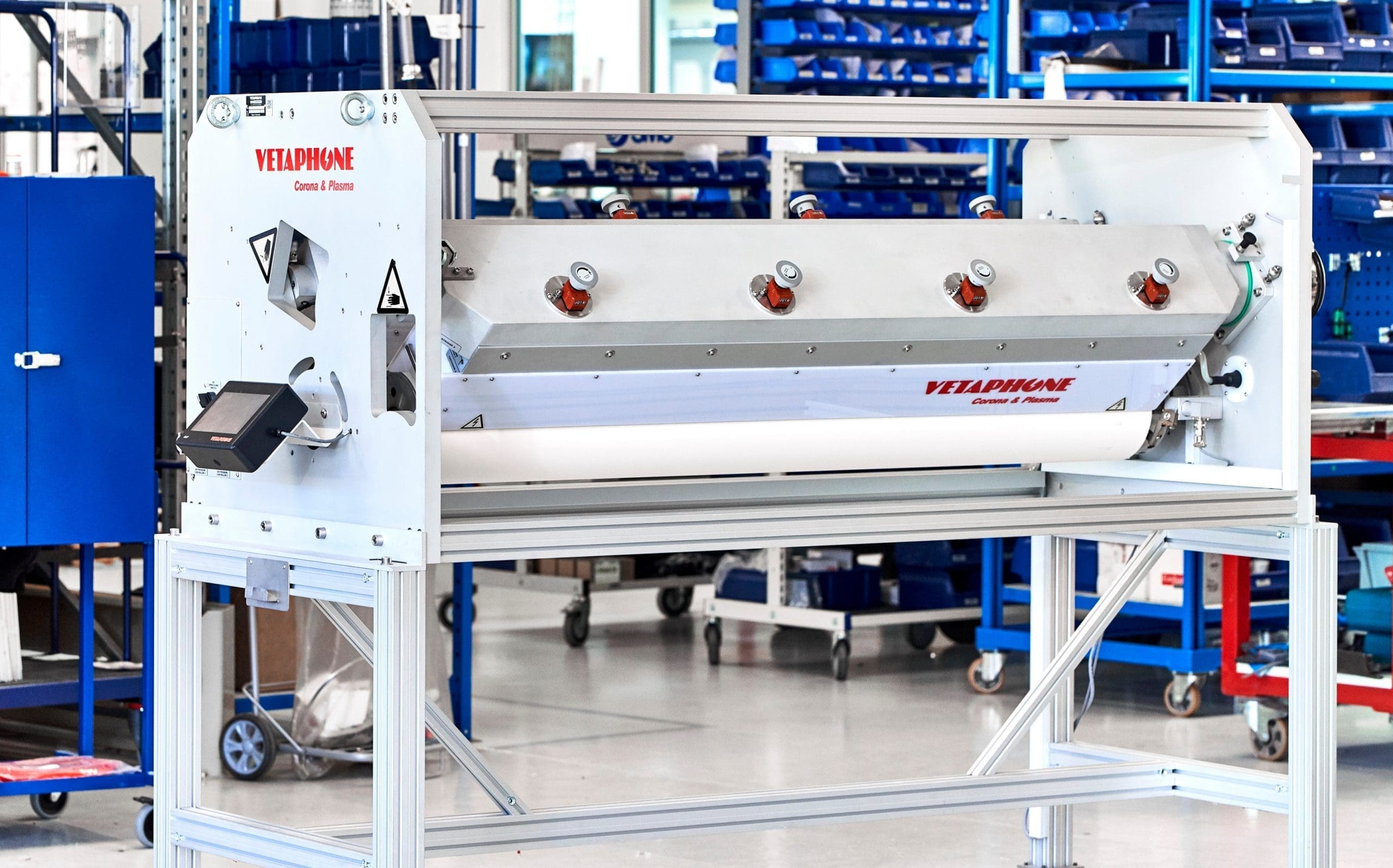Gravure Printing has been around for a long time, and way before corona treatment was first invented and developed to help printers cope with the booming demand for printed plastics in the 1950s. The principle of combating surface tension to allow inks and lacquers to adhere to a range of uncooperative substrates, is just as relevant in today’s printing industry. Kevin McKell, Vetaphone’s Vice President of Technical Sales answers some key questions.
Does gravure printing place different demands on surface treatment?
Gravure printing uses a wide variety of materials, papers, coated paters, films and foils are all widely used. In practice, the vast majority of these substrates can also be printed offset, flexo, digital, or screen. It’s not the print process that determines the need for and level of surface treatment but the substrate itself and its ability to accept ink or lacquer without smudging.
Are there any issues with gravure inks and lacquers?
In general no, the inks and lacquers are all quite standard these days, so any adhesion problems tend to be with the substrates. The recurring problem we encounter with adhesion in gravure printing (and other printing types too) is one of insufficient surface energy. Unfortunately, many customers do not appreciate that the same material from two different suppliers can perform differently – in fact two rolls from the same supplier can perform differently. That’s why it’s so important to dyne test regularly, because rolls are not necessarily the same throughout their length or width.
Why do materials perform differently?
The majority of materials that are gravure printed pose no issues – the papers and card materials accept the ink and lacquer without a problem. But, some of the coated materials or films need more care because of the surface energy. If we look at film materials first – they are surface treated when they are extruded but depending on the chemical make-up of the material the effect of that treatment can dissipate quickly. This is caused by the additives within the material migrating to the surface and covering the treated layer, resulting in the dyne level being lowered. Some coated papers and card materials behave in a similar way, when the additives within the coating migrate to the surface and lower the dyne level. Customers often ask why the job they ran well on a certain material last month, is having ink adhesion problems one month later, even though it’s from the same batch. The reason is that dyne levels fall away after a period of time to a point where the ink and lacquer simply won’t stick.
Is corona the answer to all surface treatment requirements?
Most, but not all. Some of the latest substrates have been developed to produce ‘unique’ products, typically using special inks and lacquers, lamination, multi web applications and other techniques to produce sophisticated packaging. The constituents of these substrates require a chemical treatment process as well as a physical one – and in these instances plasma treatment is necessary to ensure bonding. Plasma should not be considered as a replacement for corona, more as a logical development of technology to keep pace with the requirements of more sophisticated materials and processes.
What sets Vetaphone corona apart from the competition?
The real secret of corona treatment is managing the power output, and this is where Vetaphone has a USP! Controlled power is essential in surface treatment, so our generators’ ability to proportion the output power from 1 – 200kW related to line speed in a smooth and uniform manner removes the risk of pinholes in the substrate. Power regulation uses the ultra-fast Pulse Width Modulation (PWM) technique. This is easy to manage via the iCC7 multi-lingual operator panel that allows remote control from the central line console. All the electronics in an iCorona generator are modular for fast exchange and reduced downtime.
What’s your advice if you’re unsure about the right way to go with surface treatment?
As the inventor and pioneer of surface treatment Vetaphone is best placed to offer the widest scope of technology to meet any of today’s requirements. But, and this is the important bit, unique to Vetaphone’s corona system is the ability of the generator to switch between read-out modes that display either power output in kW, or energy delivered in Watt x min/ft². It’s no good having power without the ability to control it!

